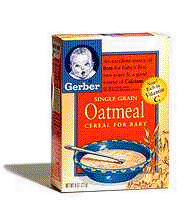
I am often asked if cavies need routine
teeth trimming. Usually a cavy will keep his teeth worn to proper
length just by eating pellets, hay, fresh grass and vegetation.
Chew toys such as cardboard boxes or tubes are also helpful.
Rodent teeth are designed to constantly grow and constantly be
worn down. Enamel on the incisors (front teeth) is harder on
the front of the tooth than on the back, causing these teeth
to be worn to a sharp edge - better for biting. Cavies use their
front teeth to bite off or pick up pieces of food. The molars
do all of the actual chewing. Cavies have 20 teeth - 4 incisors,
4 premolars and 12 molars. There is quite a gap between the incisors
and the molars. This is called the diastema.
Sometimes a cavy will be born with deformed
teeth or may develop malocclusion due to age, injury, illness
or inadequate diet. Breeding roan to roan or dalmatian to dalmatian
can increase the risk of severe teeth and eye deformities (and
other health problems) in a cavy litter. Malocclusion means one
or more tooth is overgrown, crooked or misaligned (the upper
and lower teeth are not meeting properly). This condition makes
it difficult or impossible for a cavy to eat. If a cavy is drooling,
losing weight, acts interested in food but doesn't eat much,
or makes exaggerated chewing motions when he does eat - his teeth
must be checked by a cavy knowledgeable veterinarian.
Front teeth are easily checked and trimmed.
Care should be taken not to trim too short, causing the teeth
to be painful.
Molars are much harder to get at because
of the large bucal (cheek) pads "hiding" them. An otoscope
makes checking the molars easier. A bucal pad separator (sometimes
called a cavy mouth gag) makes it easier to get at them. Sometimes
light anesthesia is used to help provide easier, steadier access
to the teeth.
|
 |
Otoscope
|
|
Molars can grow long enough and crooked
enough to actually bridge over the tongue or roof of the mouth.
Often these mutant teeth will wear sores on the cavy's tongue
or cheeks. One or two trimmings may correct the condition, though
sometimes routine trimming (every 2-4 weeks) will be necessary
to keep teeth in line. Occasionally sharp spikes or spurs on
molars need to be taken off with a file or rounger to improve
chewing and comfort. Owners can be taught to trim front teeth
themselves, molars should be done by an experienced professional.
Extremely deformed teeth may not be correctable.
 |
Any cavy having trouble eating should
be syringe-fed until he is seen by a vet and the problem can
be fixed. Soak guinea pig pellets in hot water until thoroughly
broken down. Add Gerber baby cereal and warm water to make a
thin gruel. Feed this to the cavy with a small 1 cc or 3 cc syringe,
or an eyedropper. Oxbow Hay Company also makes a wonderful product,
called Critical Care, for syringe feeding herbivores such as
cavies. For more information on this see the Oxbow web site at
www.oxbowhay.com
or call 800-249-0366.
|
Note: The bucal pad separator is a nifty
little instrument I first heard about from cavy lover/author
Peter
Gurney of London, England. Veterinarians can now get this
instrument and other rodent dental instrument through Dr Shipps
Laboratories, 351 North Foothill Road, Beverly Hills, CA 90210,
Phone: 310/550-0107.
This article and the JPGPR.com
logo are © 1993-2002 Vicki Palmer Nielsen - Jack Pine Guinea
Pig Rescue. No copyright is asserted herein regarding the illustrations
accompanying the article; copyrights, if any, of the illustrations
are retained by the original holders. If you would like to reproduce
anything from the website, please first e-mail Vicki at JPGPR@aol.com for permission.
|


